- Beetle species
- Beetle habitat
- Alpine barbel
- Beetle Features
The barbel beetle, or as it is also called the lumberjack, is one of the representatives of the winged beetle squad. The barbel family has at least 17,000 varieties of these insects, which differ not only in body size, but also in color. This is the Far Eastern barbel, and the Brazilian lumberjack, the big tooth, and the black beetle known to many, and the alpine barbel, distinguished by the exquisite beauty.
Interesting!
Representatives of this family are characterized by segmented whiskers, the length of which in some individuals can exceed the size of their own body by several times.
Another feature of barbel is a long slender body, hair and wings. Indeed, some species of woodcutter beetles are capable of flying. But not many people know how to fly smoothly and quickly.
Lumberjack Features
Many people had to meet woodworms, in connection with which they know firsthand what a barbel bug looks like. Most of these insects have a medium-sized body from 10 to 20 mm. But there are giants. So a lumberjack titanium can grow up to almost 17 cm. Another giant can be called a large-toothed olenorogenous, which has similar dimensions. The largest beetle in Europe is recognized as a carpenter beetle, whose body length reaches 6 cm. In the territory of the Russian Federation, the largest barbel beetle is the Ussuri relic barbel, whose body size reaches 11 cm. The photos and names of the barbel are presented below.
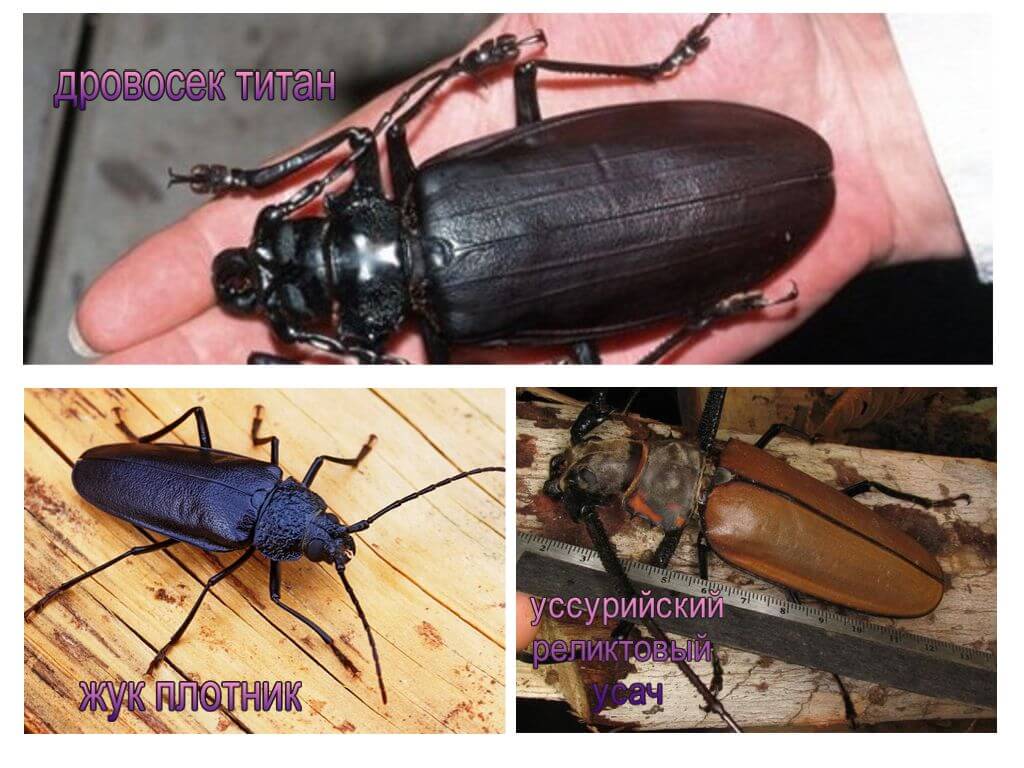
The body of the woodcutter beetle is often black or black-brown. But there are representatives whose body is white, pale yellow, gray-blue or green in tone with a barely noticeable mother-of-pearl or metallic shade. Below is the lumberjack beetle in the photo.
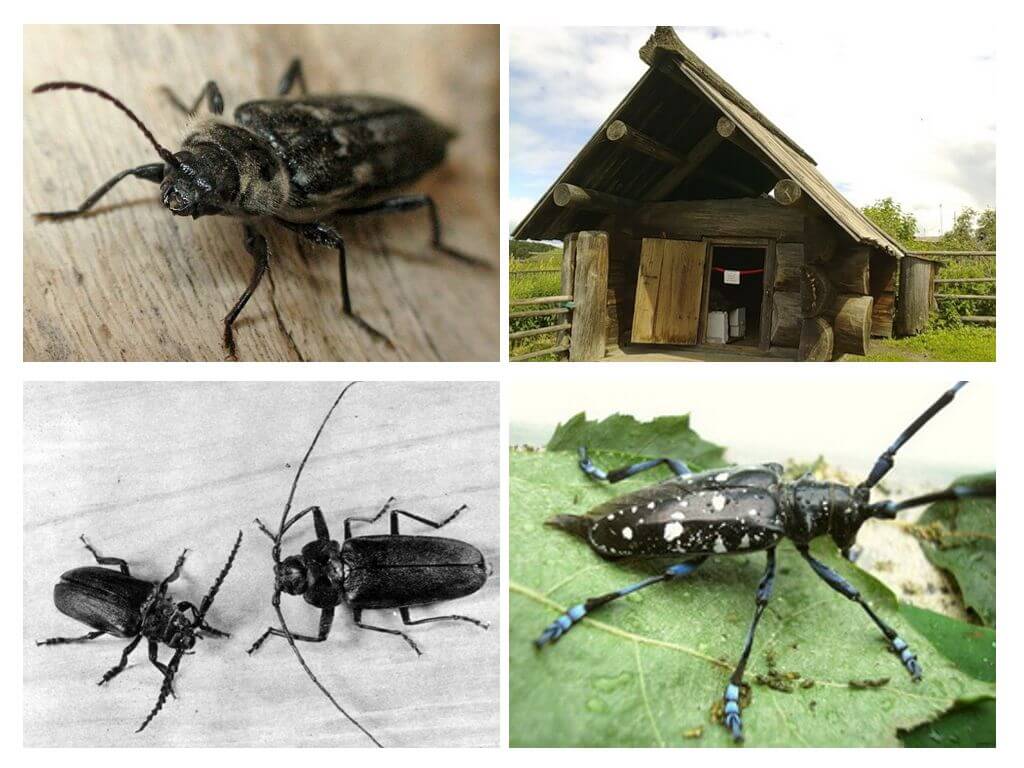
Insects of this family are distinguished by a pattern of spots, multi-colored bandages or stripes. A photo of an Alpine barbel beetle with elytra ornament can be seen below.
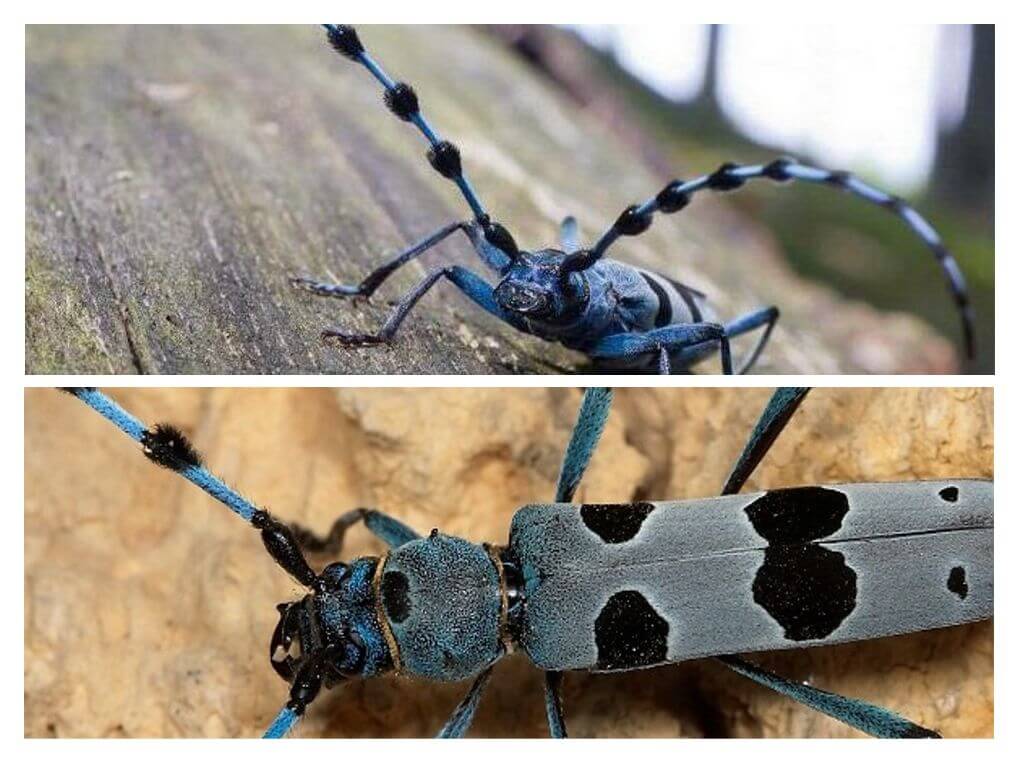
On a note!
Barbel has pronounced sexual dimorphism. The description of male and female is very different. Most often, the fairer sex is distinguished by larger sizes, color and length of the mustache.
Habitat
The favorite habitat of lumberjacks are various tree species, shrubs and herbaceous plants. Beetles can settle in a country house or in the country, destroying wooden elements of the building, furniture and boards. Populations barbel bugs in coniferous forests cause tremendous damage to forestry, therefore they must be disposed of.
Nutrition
What the barbel beetle eats depends on the type of insect and its habitat. So the lumberjack feeds mainly on needles, leaves or pollen. Barbel beetle bark beetle eats the bark of young twigs. Such a diet promotes the proper maturation of germ cells.
A black house lumberjack gnaws wood, causing irreparable damage to wooden buildings, which is the danger of a barbel for a person. After all, a favorite habitat of pests can serve:
- floor boards and ceiling rafters;
- window frames and wood upholstery;
- attic beams and partitions from wooden beams.
By itself, the beetle lumberjack is not dangerous for humans. He can only damage his property.
Interesting!
Some species of beetles feed on tree sap. And there are those representatives of this family who do not eat at all. So barbel titanium lives off of the nutrients that it stocks up while still at the larval stage.
Lifestyle
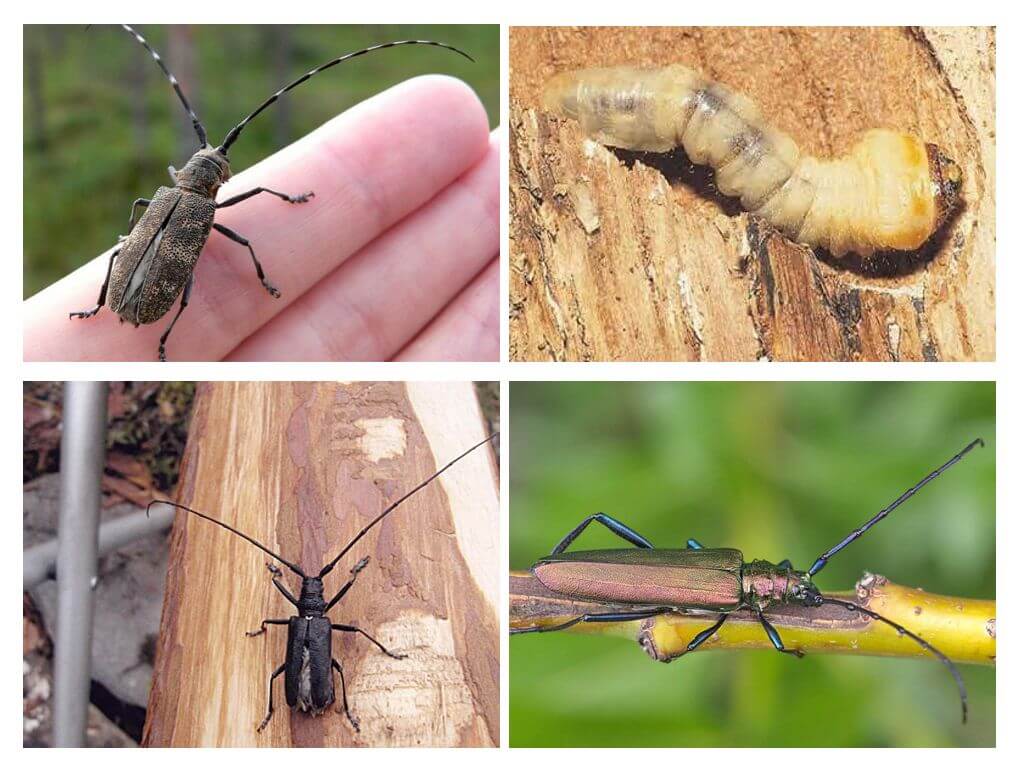
The lifestyle of lumberjacks depends on weather conditions and the terrain in which they live. Beetles that feed on flowers are active during the day. Others, such as titanium barbel, leave their shelters exclusively at night. In some species, males are prone to migrations, while in others, females are exclusively.
Breeding
After fertilization, the female searches for a suitable place for laying eggs. Most often, they are small cracks in the wood. At one time, the female can lay up to four hundred eggs, of which in 12-15 days gluttonous larvae appear.
The larva of the barbel beetle is often white. On her slightly flattened body, instead of paws, there are special swellings. Thanks to them, the larva moves. The insect has a well developed prothorax and powerful jaws. They enable the larva to feed and gnaw moves in the wood.
On a note!
The tree bark, in which the larvae live for a long time, serves them not only as a home. It is also the main source of food. The larvae have such a big appetite that soon there will be only one piece of dirt left from the structure in which they settled.
By winter, the larvae pupate, and in spring, adult longhorn beetles appear from them. The development process from an egg to a mature individual in different species may differ, on average, it lasts from 1.5 to 2 years. However, living in the depths of the material, the larvae are protected from the outside and have the opportunity to live for more than a dozen years. This time is enough for them to lay passages with a length of about 30-40 km. In one day, one larva builds a tunnel, the length of which is about 15-30 mm.
Signs of presence
A thorough inspection of a wooden surface will help determine the presence of pests. This can be evidenced by winding paths, audible crunching and brown flour, which is still yellowish in color. Another sign of pest infection is the release of brown liquid from the woodworm moves with a sharp acidic aroma.
Preventive measures
So that barbel bugs do not damage your structure, you must:
- conduct a thorough inspection of the wood for holes made by insects in it;
- if damage is found, use special protective equipment;
- keep the room dry, because excessive humidity is one of the favorable conditions for the habitat of insects;
- for preventive purposes, wooden surfaces must be periodically treated with special insecticidal agents;
- for construction, use material not infected with insects, it is easy to verify this when the wood is cleared of bark;
- with strong infection of wooden structures, they should be replaced with new elements.
Periodically conducting these simple events, you can protect the house from pests.
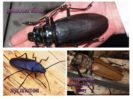
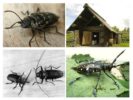
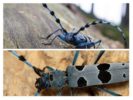
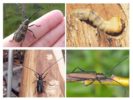
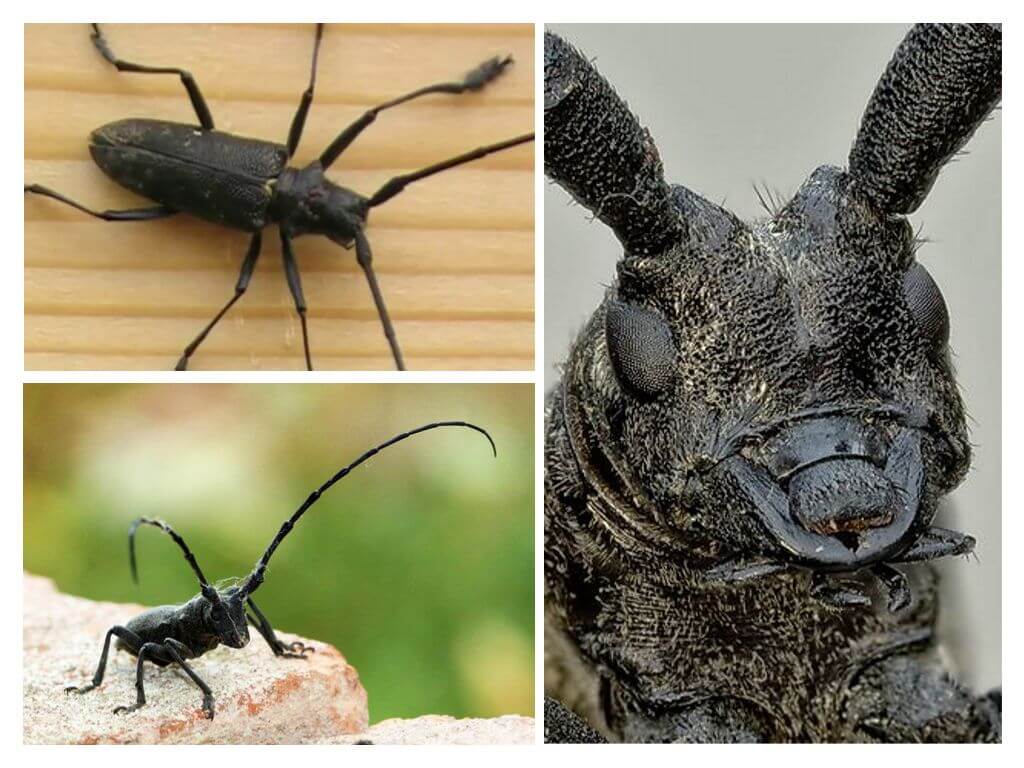
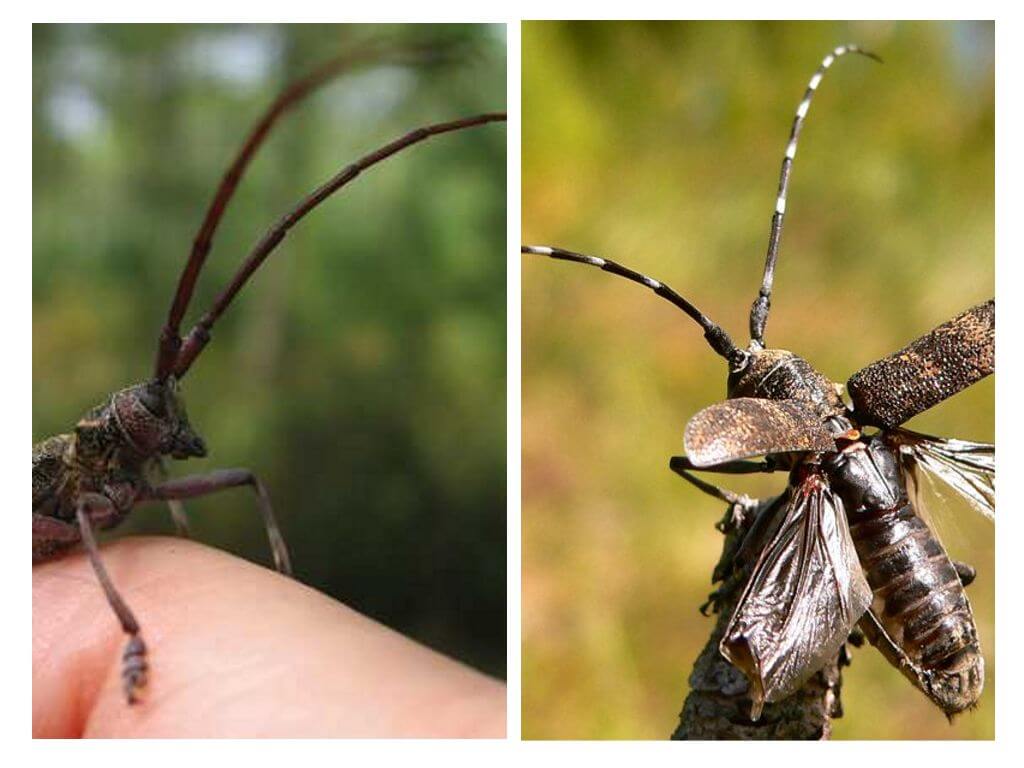
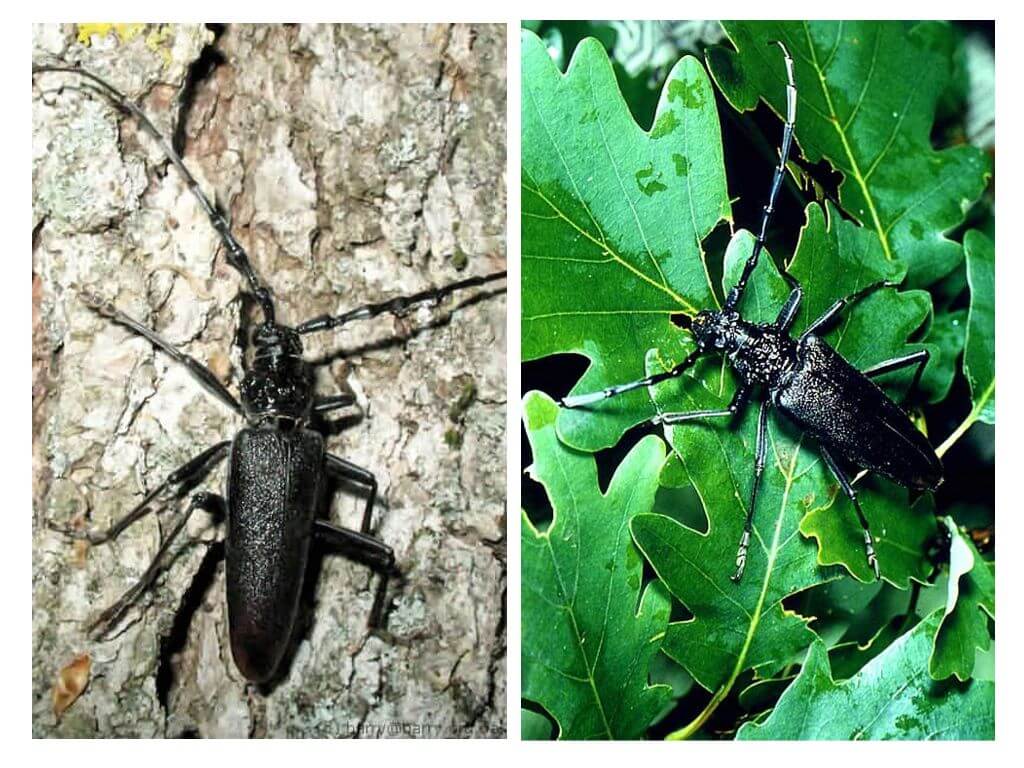
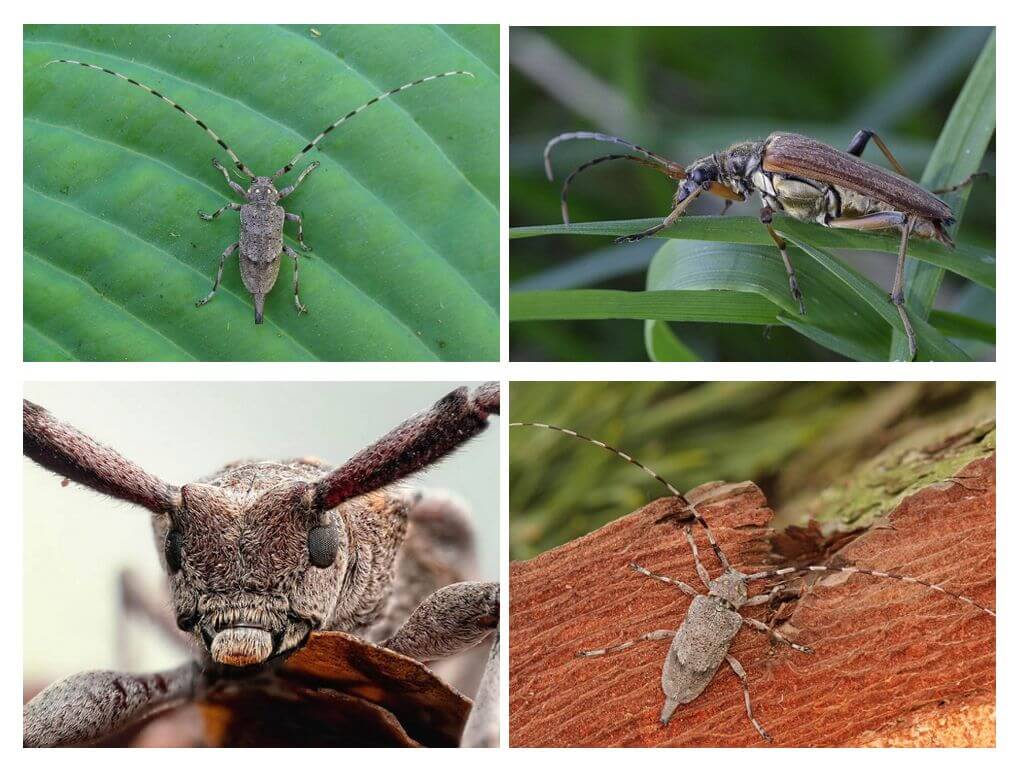
So that the bugs do not eat the house, it is enough to whitewash it with lime.
I regularly process wood with an antiseptic until I had to meet these reptiles.
How can you catch a barbel?
The net. In the summer, they fly almost everywhere. They fly to the light more often, but rarely manage to catch the beautiful ones.
Where can I get a titanium beetle?
In Brazil or Ecuador. Or buy from collectors. Only now they are worth a lot.
A new newly built house (only 2 years) began to eat a bug. Until he called experts, wood dust fell from him like dust.
I regularly inspect the wooden surface, as it may be infected by the pest initially.
Alpine barbel is just handsome, I would like to meet this.